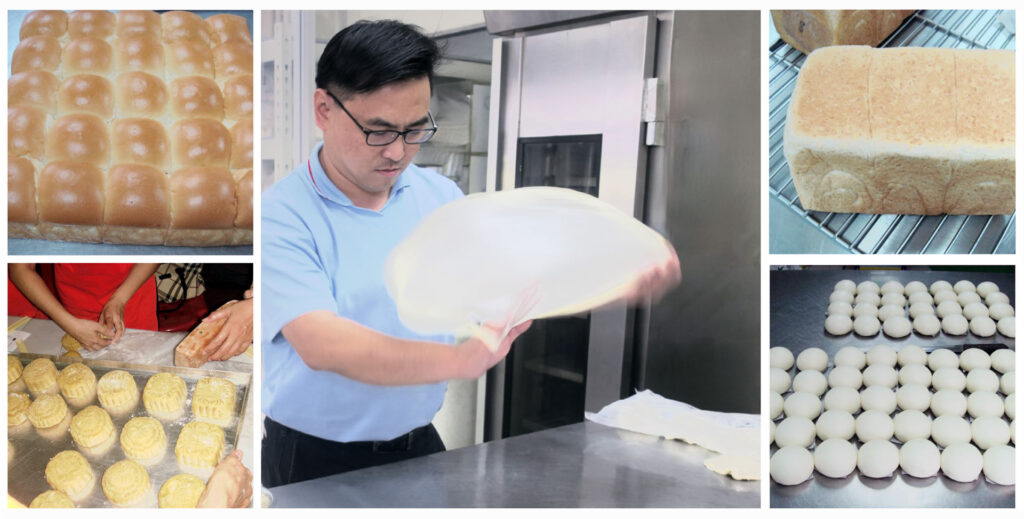I’ve always been fascinated by how flour is produced from a single grain of wheat!
Flour can be milled from whole wheat grains, or from a portion of the grain or combinations of different portions, to give different flour properties for making different types of foods with different flavours, textures, nutritional contents and bites. It’s amazing – all the milling knowledge and technology that enable the miller to separate flour out from different parts of the wheat kernel.
Wheat itself comes in so many varieties from different geographical areas, and every single variety has its unique quality that is affected by weather, soil condition and growing conditions. When I try to plant wheat in my garden in Malaysia it has a different growth pattern when compared to normal wheat growth.
It reaches Feeks 10.1 (Heading) within 2 months at very low height, only about 20-40cm. And the head has fewer than 20 kernels, as opposed to about 35-50 kernels normally.

Kok Ping Ng | Senior Food Technologist at Malayan Flour Mills Berhad
Flour that is milled from different life cycles of wheat, for example sound mature wheat or sprouted wheat kernels, can be used to produce foods that have different nutritional content and baking performance.
When we come to the application part of flour as an ingredient in food systems, just by knowing its unique key performance quality we can optimize the flour quality, and adjust it for different baking goods by mixing it with other food ingredients. Alternatively we can adjust it using various type of enzymes. We can also turn flour into the desired baked good by modifying the baking process.
For example, to make Roti Canai, a favourite Malaysian food, the secret of getting a good bite is in the dough stretching skill. By knowing the flour quality to optimize the dough extensibility and strength, we can adjust the water content or add other minor ingredients, and we can also adjust the dough mixing method and resting time if flour does not perform like we are used to.

I acquired my professional enthusiasm for flour after joining the flour milling industry about 20 plus years ago. It’s the passion for seeking knowledge that makes flour the magic ingredient, and this has involved the efforts of many people including scientists, farmers, millers, food technologists and bakers for over a thousand years.
I’m so excited that the Flour World Museum founded World Flour Day on March 20th in 2019. So that when I celebrate my birthday on 20 March every year going forward, I can celebrate the “White Gold” together with all flour professionals and aficionados, at the same time always reminding myself to dive deeper into #understandingflour.
